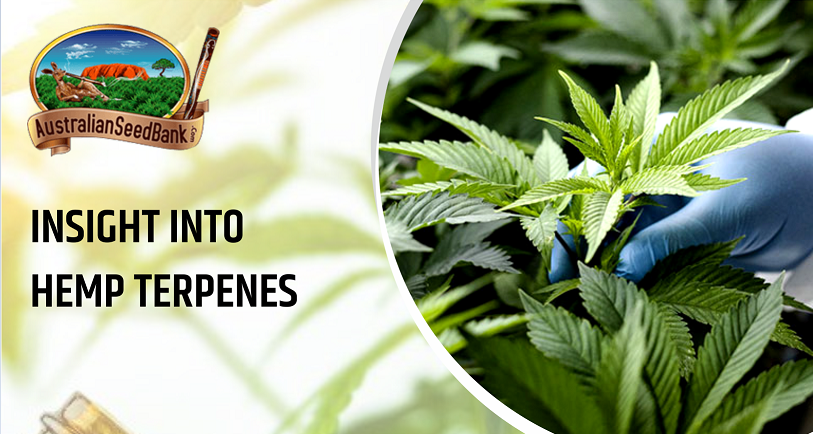
Terpenes are a group of volatile hydrocarbon compounds produced by the cannabis plant. They give cannabis its characteristic aroma and smell and have been used by humans for thousands of years in aromatherapy. Terpenes have been declared safe for human consumption by the Food and Drug Association and are used in a variety of food and cosmetic products.
Terpenes versus terpenoids
The words terpene and terpenoid are used interchangeably by many cannabis growers and the cannabis industry, but there are some important differences between them. The real difference between terpenes and terpenoids is that terpenes are hydrocarbons while terpenoids are oxidised. Think of how it is with hemp flower. The cannabis plant, in its raw form, has terpenes in its trichomes. But when the grower dries and processes the flower, some terpenes change chemically and become terpenoids.
The difference between cannabinoids and terpenes
Cannabinoids are considered by many to be the most important part of the cannabis plant. However, as we have discussed the entourage effect and its benefits, there are several other compounds that are just as important as cannabinoids, one of them being terpenes. Terpenes are not unique to cannabis. In fact, they are widespread compounds found in all plants.
For many years, CBD and THC were thought to be the only active compounds in cannabis capable of binding to endocannabinoid receptors. A study by Julia Cavalli (2021) shows that cannabinoids are, by definition, phenolic components of Cannabis sativa L. and until recently were the only natural products known to interact directly with cannabinoid receptors. However, in recent years, a number of natural compounds of plant origin other than cannabinoids have also been reported to act as cannabinoid receptor ligands. Therefore, the definition of phytocannabinoids has been broadened to include all-natural compounds of plant origin that have a chemical similarity to cannabinoids and/or are able to interact directly with cannabinoid receptors. The evidence presented in this paper supports the idea that cannabimimetic terpenes could interact with CB1 and CB2 receptors and specifically act on a wide range of physiological conditions.
The most studied terpenes found in cannabis
Terpenes, consisting of more than 30 000 compounds, are ubiquitous. Let’s take a look at the 10 most common terpenes found in cannabis.
-
Pinene
Pinene is an aromatic compound often found in cannabis and smells of – you guessed it – pine forest. But there is much more to pinene than the aroma.
-
Limonene
Limonene is a colourless liquid aliphatic hydrocarbon classified as a cyclic monoterpene and is the main constituent of citrus peel oil. The D-isomer, more common in nature as an orange flavouring, is a flavouring in food production.
-
Terpinolene
Terpinolene is found in lilacs, nutmeg, caraway and apples. The cannabis plant is an impressive alchemist, capable of producing hundreds of cannabinoids and terpenes.
-
Myrcene
One of the most common terpenes found in cannabis is myrcene. In addition to cannabis, myrcene is found in hops and is responsible for the peppery, spicy, balsamic aroma in beer. It is also expressed in lemongrass, which has been used for centuries in traditional folk medicine.
-
Caryophyllene
The terpene caryophyllene is found in many herbs and spices, including black pepper, basil and oregano, and cannabis strains high in it provide a spicy, cheerful warmth to the nose similar to cinnamon and cloves.
-
Linalool
Linalool is two enantiomers of a naturally occurring terpene alcohol found in many flowers and spices. This pair has several commercial uses, most of which are based on its pleasant odour. Linalool is a colourless oil. It is classified as an acyclic monoterpenoid.
-
Humulene
The earthy, woody and spicy notes that give hoppy beers their characteristic flavour and aroma are partly responsible for hemp’s unique aroma. Hops and cannabis share a common terpene, humulene. It is very similar to myrcene.
-
Eucalyptol
Eucalyptol is a monoterpenoid. It is a colourless liquid, double ether. Eucalyptol has a fresh, mint-like odour and a spicy, cooling taste. It is insoluble in water but miscible with organic solvents. Eucalyptol accounts for 90% of eucalyptus oil.
-
Ocimene
Ocimene is the terpene responsible for the sweet and medicinal aroma of some cannabis strains and can also impart citrus and woody aromas. It can also have various medicinal properties as well as an invigorating effect.
-
Terpineol
Terpineols are tertiary alcohols of monocyclic monoterpenes that occur naturally in plant species. There are five common isomers of terpineols, of which α-terpineol and its isomer terpin-4-ol are the most common naturally occurring terpineols. α-Terpineol is very important in the industry. It has a pleasant lilac-like odour and is a common ingredient in perfumes, cosmetics and aromatic fragrances.
Conclusion
Terpenes are as important as cannabinoids. Cannabinoids have probably received a lot of attention, and understandably so; after all, they are unique to cannabis and hemp plants. However, without terpenes, cannabinoids would be much less effective, not to mention much less aromatic.



Leave a Reply